NUTRITIONAL VALUES
Roberto Barbani e Valentina Sabbioni
Given their wide geographic distribution, different types of habitat and need to source food on a daily basis, wild animals cover considerable distances, and as a result develop lean, well-oxygenated muscle. In some countries game meat is known as “black meat” (INRAN, IstitutoNazionale di Ricerca per gli Alimenti e la Nutrizione – the Italian National Food and Nutrition Research Institute), due to its high iron content, iron being indispensable for binding oxygen and therefore muscle function.
The meat from wild animals has particular nutritional qualities that make it a very healthy food: rich in protein, essential amino acids, vitamins and minerals, and above all very lean and naturally low in cholesterol. The fat content of game ranges on average between 2% (0.6 to 2.6% in cervids) and 5% (3.5 to 5.2% in wild boar), while its calorie count is around to 110 and 120 kilocalories.
Meat is viewed as the main source of fat in our diet, and especially saturated fatty acids, which are implicated in many diseases now typical of Western society. The World Health Organization recommends that our daily intake of fat should be less than 30% of our total calories, and that saturated fat should be limited to 10%. Because of the risks associated with fat intake from red meat, there is now increasing demand for lean meats.
Game contains 50-80% less fat than red meat. Analyzing meat from wild animals that have been farmed shows that the feed administered significantly increased the fat content and reduced the ratio of polyunsaturated to saturated fat. A study that looked at wild deer revealed that in their lean meat, there was a high level of polyunsaturated fatty acids, a high ratio of polyunsaturated to saturated fat and a low ratio of omega-6 to omega-3. Wild boar meat has an omega-6/omega-3 ratio of between 6 and 8, significantly better than pork.
Like other single stomach animals, the fatty acid composition of wild boar meat depends on the animals’ diet. Wild boars eat a great variety of indigenous plants, herbs, seeds, roots, fruit, insects, earthworms, snails, small mammals and carrion. This kind of diet means that wild boar meat has a ratio of polyunsaturated to saturated fat that is above the minimum threshold (0.4) recommended by the UK Department of Health to reduce the risk of heart disease in humans.
The high concentration of vitamin E in the meat of these animals helps increase its shelf life: vitamin E is an antioxidant, essential for the stability of the meat.
It is therefore to be hoped that more consumers come to appreciate these alternative meats, in the light of their evident health benefits and increasing availability.
GAME MEAT
NUTRITION VALUES
#TASTERIGHT
VENISON
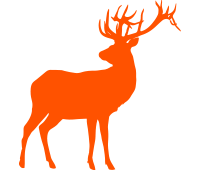
| CARBOHYDRATES | 0 g |
| PROTEIN | 36,08 g |
| FAT | 3,93 G |
| CALORIES | 190 kcal |
WILD BOAR
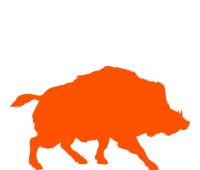
| CARBOHYDRATES | 0 g |
| PROTEIN | 27,8 g |
| FAT | 4,3 g |
| CALORIES | 157 kcal |
HARE
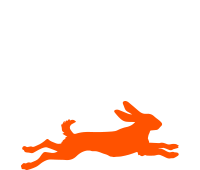
| CARBOHYDRATES | 0 g |
| PROTEIN | 32,88 g |
| FAT | 3,5 g |
| CALORIES | 172 kcal |
DUCK

| CARBOHYDRATES | 0 g |
| PROTEIN | 23,38 g |
| FAT | 11,15 g |
| CALORIES | 200 kcal |
PHEASANT
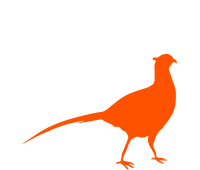
| CARBOHYDRATES | 0 g |
| PROTEIN | 32,26 g |
| FAT | 12,05 g |
| CALORIES | 238 kcal |
QUAIL

| CARBOHYDRATES | 0 g |
| PROTEIN | 25 g |
| FAT | 14,04 g |
| CALORIES | 226 kcal |
MOOSE
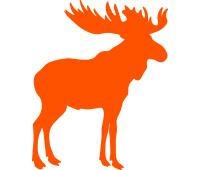
| CARBOHYDRATES | 0 g |
| PROTEIN | 29,15 g |
| FAT | 0,97 g |
| CALORIES | 133 kcal |
GOOSE

| CARBOHYDRATES | 0 g |
| PROTEIN | 25,06 g |
| FAT | 21,83 g |
| CALORIES | 304 kcal |
BISON
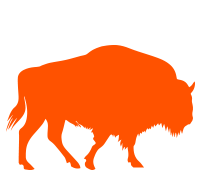
| CARBOHYDRATES | 0 g |
| PROTEIN | 28,32 g |
| FAT | 2,41 g |
| CALORIES | 142 kcal |
TURKEY
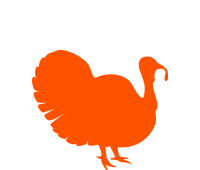
| CARBOHYDRATES | 0 g |
| PROTEIN | 28,81 g |
| FAT | 2,06 g |
| CALORIES | 139 kcal |
STORE BOUGHT MEATS
CHICKEN
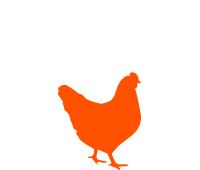
| CARBOHYDRATES | 0,1 g |
| PROTEIN | 25,07 g |
| FAT | 10,65 g |
| CALORIES | 196 kcal |
PORK

| CARBOHYDRATES | 0 g |
| PROTEIN | 27,69 g |
| FAT | 10,5 g |
| CALORIES | 211 kcal |
BEEF
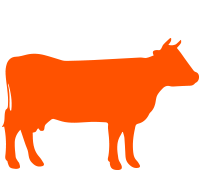
| CARBOHYDRATES | 0 g |
| PROTEIN | 29,85 g |
| FAT | 11,3 g |
| CALORIES | 229 kcal |
SALMON

| CARBOHYDRATES | 0,1 g |
| PROTEIN | 25,08 g |
| FAT | 9,06 g |
| CALORIES | 188 kcal |
(Average values based on 100 g of portion)
Source: U.S. Department of Agriculture, Agricultural Research Service
Fond brun (game stock)
Several carcasses or bones and offcuts of the same species of animal,
1 stalk green celery
2 medium carrots
1 French onion
2 glasses aromatic white wine
2 cups vegetable stock
1 ripe tomato
1 bay leaf
2-3 parsley stems without the leaves
3-4 juniper berries
1 clove
extra virgin olive oil
salt
1 teaspoon black peppercorns
Break up the bones and rub them with extra virgin olive oil. Put them in a baking tray and brown them in a preheated oven at 220 °C, until dried out and very dark, but not burnt.
Transfer them into a large saucepan. Coarsely chop the celery, carrots and onion, and sauté them in another pan with a little oil, over a high heat initially, then turn it down to minimum. Once the vegetables are cooked, turn up the heat and brown till nice and golden. Then put them in the pan with the roasted bones.
Pour a glass of wine into the pan you used to cook the vegetables and simmer until reduced by half. Repeat this operation with the baking tray used to roast the bones: pour in the second glass of wine and scrape the tray with a spatula to incorporate the caramelized meat juices. If necessary, add a cup of stock. Pour the liquid from the tray into the pan with the bones and vegetables.
Wash the tomato and dice it. Brown it in a pan with a little oil over a high heat and add it to the other ingredients. Deglaze this pan with a cup of stock, reduce it and add it to the rest. Brown all the ingredients together for a few minutes over a high heat, then add the bay leaf, parsley, juniper, clove and pepper, and cover with water. Cook uncovered, over medium heat, for around an hour and a half.
Once cooked, season with salt then strain. The best way to cool it is to put the pan directly into a large bowl of water and ice. Pour the stock into jars and refrigerate or freeze immediately.